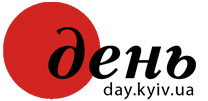By Oleh SYDOR-HIBELYNDA, Art-Line, special
to The Day
You begin to feel that Kharkiv was Ukraine's capital for about fifteen
years not only when you arrive in the city (in the mid-eighties, the number
of culture cafes on Sumska Street could not be compared with the handful
of coffee shops on Kyiv's Khreshchatyk and around town) but also when you
look at its artistic collection. Visiting the Kharkiv (and Parkhomivka)
museums, whose best canvases are presented as an average art exhibition,
raises a sacramental question: and what do we see every day? What kind
of pap are we being fed?
The Slobozhanshchyna collection of treasures impresses not only the
Kyivans, much to the chagrin of the foreign Tretiakov Gallery. Hey, Kharkiv
natives! You even have Zaporizhzhia Cossacks of your own! It does
not matter that this time the picture was left at home. All the rest seem
to have occupied the fifth floor of Ukrainian House that looks as if it
had at last been cleansed of the recent art-festival miasma. There are
so many good exhibits here that one can suspect prejudice in any selective
viewing of them. And the best thing to do in this case is not to hide your
prejudice. What touched you in the raw deserves mention.
Above all, faces. Images. My favorite portrait here is Tetiana
by Oleksandr Murash: still waters run deep. (The Little Devil was
not yet been painted by Sologub, but the quiet seductress, the young mermaid
Liudmyla, but under a different name, is right here in the flesh, and the
imps are so true to life). Tropinin's Shcherbinin seems to be teaching
us foreign dignity and the spirit of aristocratism. But the eyes run around
like frightened cockroaches. No, you cannot believe this effeminate slick
gentleman, the former warrior of 1812: he is too overbearing. Unlike the
"modest toiler" Dmytro Bezperchy (a 1946 self-portrait). Or the Ukrainian
ox-cart driver Fedir Mihas with as unruly a forelock as his nature (a drawing
by Porfyry Martynovych). These are the examples to follow. Is nobility
predetermined as choice and plebeians your friends? But only aristocrats
know the true price of equality. The wave of turncoats swept over Russia
not since 1917 but at least fifty years earlier. Hence the general-like
poise of the famous democratic critic Stasov and the regal nature of his
predictable "unquestionableness" in a Repin's study of 1905. Also hence
the simplicity of a young peasant girl brooding over the book (it almost
reminds us of peredvizhniki nineteenth century Russian realist painters
but in fact belongs to the Paris school). She was embodied on the canvas
by Mariya Bashkyrtseva, a Haivoron noble lady, dilettante artist, and platonic
friend of Guy de Maupassant (the latter role was best for the author).
Then we see the world-class masterpiece Matveyeva by the brush of
Vasily Surikov. Let modern realist academicians try at least once in their
lifetime to paint something of the kind instead of hastening to proclaim
themselves successors to the nineteenth century giants. A portrait based
on artistic ease and ethnographic accuracy (and, besides, made for as long
as a year) has crystallized over a century into the powerful image of an
independent Russian "headstrong woman." She could be an inspiration for
The Siberiad and our feminists, but they have other priorities.
And the somber old man by Giuseppe Maria Crespi forces me to paraphrase
the classic: "This thing is stronger than Faust (Rembrandt)." The
eye sockets and deep wrinkles resemble the abysses of Haarmens's and Van
Dyck's caves.
In general, the Occidental and Oriental branches of most of our museums
(Kharkiv's inclusive) seem to be an honorary and not-so-perfect chamber
built for want of something better. An exception in the exhibition is Albrecht
DЯrer's rarity: a series of woodcuts, The Life of Mary, where every
cell throbs in the nervous tension of the Protestant North. You find a
kind of unnatural poetry in the unusual fold of a quaint hood on the head
of a sixteenth-century peasant. Oh, but this is the Nativity! Never before
had the Magi looked so care-free and down-to-earth, never before DЯrer!
Never did Gabriel shove so matter-of-factly his two fingers into the stomach
of the Virgin Mary standing silently by the desk. I suspect that the grim-faced
shopkeepers and money-changers in the engraving Entry into the Temple
are the same ones whom Mary's Son would throw out of the temple thirty
years later.
The Kharkiv visit is undoubtedly one of the most beautiful events of
this art season, which, however, was undeservedly ignored by the press.
But this lack of attention is reciprocal: that working with the media is
today more important than playing up to the nobility, is understood not
only in the West but also in the Ukrainian capital. And for our kind-hearted
and naive provincials, who are obsessed by the illusion of official tutelage,
this still seems to be a closed book.






